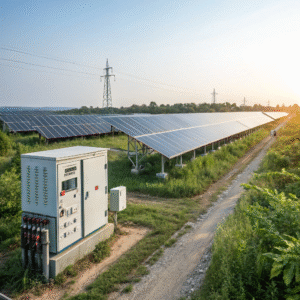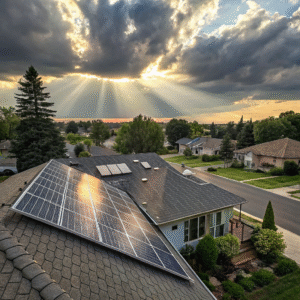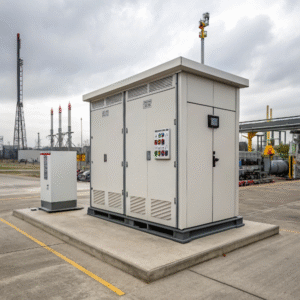Are hybrid solar systems worth it?
by
Are hybrid solar systems worth it?
Solar panels are great when the sun shines, but night and cloudy days create power gaps. This is the challenge hybrid solar systems aim to solve.
Hybrid solar systems combine solar panels with battery storage and grid connection, providing uninterrupted power while maximizing solar energy use, making them worth it for most homeowners seeking energy independence.
Stuck between going completely off-grid or staying grid-tied? Hybrid systems offer a smart middle ground. They provide backup power during outages while still letting you benefit from net metering.
What is the difference between a hybrid solar system and a normal solar system?
Most homeowners know about standard grid-tied solar, but hybrid systems add crucial capabilities that solve common solar limitations.
Key differences between hybrid and normal solar systems:
- Hybrid systems include battery storage while normal systems don't
- Hybrid can operate during grid outages, normal systems shut down
- Hybrid systems manage energy flow between solar, batteries, and grid
- Normal systems send excess power directly to the grid
Understanding the technical distinctions
| Feature | Hybrid System | Normal System |
|---|---|---|
| Battery Storage | Yes | No |
| Off-grid Capability | Limited | None |
| Energy Management | Advanced | Basic |
| Outage Protection | Yes | No |
| Installation Cost | 20-40% Higher | Lower |
Hybrid systems use sophisticated inverters that can:
- Prioritize solar power for immediate use
- Store excess in batteries rather than sending to grid
- Switch to battery power during peak rate periods
- Provide backup during outages
What is needed for a hybrid solar system?
Building a proper hybrid system requires more than just adding batteries to an existing solar array. The right components work together to create a seamless energy solution.
Essential components for a hybrid solar system:
- Solar panels (typically 5-10kW for homes)
- Hybrid inverter (or inverter + battery controller)
- Lithium-ion battery bank (10-20kWh capacity)
- Smart energy management system
- Grid connection with safety cutoffs
Detailed component breakdown
1. Solar panels:
- Standard silicon panels (mono or polycrystalline)
- 400W+ panels recommended for space efficiency
- Enough capacity to cover daily needs plus recharge batteries
2. Hybrid inverter:
- Must handle both DC-AC conversion and battery charging
- Common sizes: 5kW, 8kW, 10kW
- Should include grid-tie capabilities and safety features
3. Battery bank:
- Lithium-ion (LiFePO4) preferred for longevity
- Typical home systems need 10-20kWh storage
- Enough capacity for overnight use and cloudy days
Additional recommended components:
- Energy monitoring software
- Automatic transfer switch
- Backup generator input (for extended outages)
Which is better, off-grid or on-grid solar system?
The choice between off-grid and on-grid solar depends on your location, energy needs, and budget. Each option serves different purposes well.
Off-grid systems excel in remote locations but require large battery banks, while grid-tied systems are simpler and cheaper but offer no backup during outages - hybrid systems balance these tradeoffs.
Comparative analysis
Off-Grid Pros:
- Complete energy independence
- No electric bills
- Works anywhere
Off-Grid Cons:
- Very expensive battery requirements
- Potential power shortages
- More maintenance
Grid-Tied Pros:
- Lower upfront cost
- Net metering benefits
- No battery maintenance
Grid-Tied Cons:
- No power during outages
- Dependent on utility policies
- Limited control over rates
Hybrid systems split the difference by:
- Providing backup during outages
- Allowing net metering benefits
- Reducing battery size needs
- Offering energy bill savings
Conclusion
Hybrid solar systems deliver the reliability of battery backup with the cost-effectiveness of grid connection, making them an increasingly popular choice for modern solar installations.



